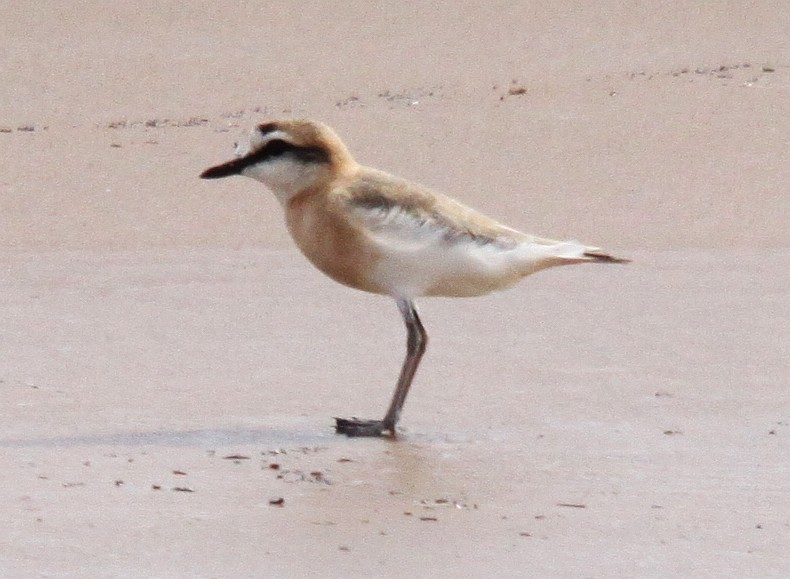Greater Sand Plover
A species of Typical plovers, Also known as Large Sand Plover Scientific name : Charadrius leschenaultii Genus : Typical plovers
Greater Sand Plover, A species of Typical plovers
Also known as:
Large Sand Plover
Botanical name: Charadrius leschenaultii
Genus: Typical plovers
Content
Description General Info
 Photo By Donald Macauley , used under CC-BY-SA-2.0 /Cropped and compressed from original
Photo By Donald Macauley , used under CC-BY-SA-2.0 /Cropped and compressed from original Description
This chunky plover is long-legged and thick-billed. Breeding males have grey backs and white underparts. The breast, forehead and nape are chestnut, and there is a black eye mask. The female is duller, and winter and juvenile birds lack the chestnut, apart from a hint of rufous on the head. Legs are greenish and the bill black. In all plumages, it is very similar to lesser sand plover, Charadrius mongolus. Separating the species may be straightforward in mixed wintering flocks on an Indian beach, where the difference in size and structure is obvious; it is another thing altogether to identify a lone vagrant to western Europe, where both species are very rare. The problem is compounded in that the Middle Eastern race of the greater sand plover is the most similar to the lesser species. 
Size
25 cm
Colors
Brown
Black
Gray
White
Life Expectancy
21.6 years
Nest Placement
Ground
Feeding Habits
Greater Sand Plover primarily feeds on insects, crustaceans, and annelid worms, utilizing a distinctive run-and-pause foraging method, as opposed to continuous probing.
Habitat
Greater Sand Plover typically inhabits coastal regions, favoring mudflats and sandy shores. During the breeding season, greater Sand Plover is found in arid environments such as deserts or semi-deserts, often near water and in bare, open areas without vegetation, up to altitudes of 3000 meters. In the non-breeding season, greater Sand Plover prefers coastal habitats, including sheltered beaches, estuaries with extensive intertidal zones, reefs, rocky islands, and dunes. Occasionally, greater Sand Plover may utilize inland saline and brackish wetlands, roosting on sandbanks and spits.
Dite type
Insectivorous
General Info
Feeding Habits
Bird food type
Distribution Area
It breeds in the semi-deserts of Turkey and eastwards through Central Asia. It nests in a bare ground scrape. This species is strongly migratory, wintering on sandy beaches in East Africa, South Asia and Australasia. It is a rare vagrant in western Europe, where it has been recorded as far west as Iceland. It has been spotted twice in North America, the most recent being on May 14, 2009, in Jacksonville, Florida. 
Species Status
Not globally threatened.
Scientific Classification
Phylum
Chordates Class
Birds Order
Shorebirds Family
Plovers Genus
Typical plovers Species
Greater Sand Plover